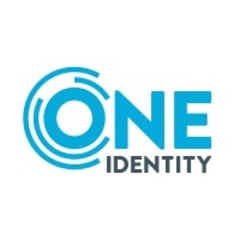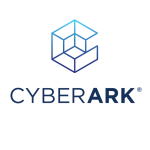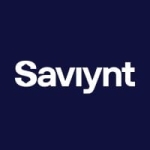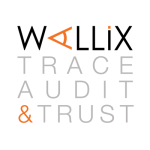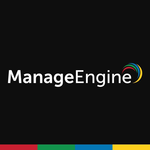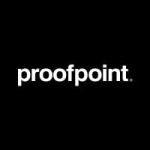What is our primary use case?
I am an independent consultant who assists end users in deploying One Identity Safeguard correctly and creating all necessary workflows within the product. I then ensure its effective utilization in the production environment. I have been working with Safeguard since the beginning and continue to use it presently. Based on my experience, the majority of projects, around ninety-nine percent, involve virtual appliances. While I have performed some hardware appliance installations, I lack extensive experience with them. Therefore, I cannot definitively state whether they are good or bad. However, I can affirm that they function properly.
When we discuss the situation at the beginning of my journey, it serves as a safeguard. So, seven years ago, it primarily revolved around RDP and SSH session control. However, nowadays, I observe that customers are shifting their focus primarily toward password rotation and password management functionality. Moreover, they are increasingly utilizing the permanent analytics capabilities of Safeguard, such as user entity and behavioral analytics. Currently, we utilize all the functionality offered by One Identity Safeguard, including password rotation, password management, session management, and possibly session harmonics as well.
In most cases, we are referring to active directory environments and the safeguards implemented in such environments. This implies a close integration with the domain controllers, which serve as a source of identity information. However, the customers I work with as an independent consultant often utilize password management solutions. This indicates their desire to replace passwords, which may already be in use on certain devices. Sometimes, it involves scheduled password rotation. Additionally, session management has evolved. Nowadays, some customers are not only using RDP and SSH control but also MSS. Furthermore, I have worked on several projects involving HTTPS special control.
How has it helped my organization?
The situation as it was seven years ago, the usability and functionality of Safeguard were like three key questions in the case of Safeguard. Unfortunately, several years ago, they still had a sync client, which means a desktop application for one part of the product, while another part of the product was managed through the web UI. Of course, it was not so convenient. But nowadays, all the functionality is managed from the same console, meaning via the web UI, 100 percent. So, from this perspective, I can say that customers are quite happy with the current user interface of the solution.
The most important benefit is that when we talk about the deployment of any PAM solution, it serves as a centralized point for privileged access connections. This includes internal users, such as administrators or individuals with special privileges, like an accountant with additional access to the company's ERP system. This is in contrast to the standard situation where users have a direct connection to the target system, which lacks control. Firstly, a single point is created to enable full control over connections. Additionally, automation allows for quick response in case of any malicious activity. For instance, if the system detects abnormal behavior, such as in an SSH session, it can instantly terminate the session without requiring the involvement of cybersecurity personnel. The advantage of this approach is that it eliminates the need to involve humans in the process, which would take time. With a PAM solution like Safeguard, these actions can be executed within seconds, preventing any negative impact on the target system.
From my perspective, using the transparent mode is quite easy. However, from the customer's point of view, they should take the time to understand how it works properly. Once they grasp the concept of how this mode operates, which is made possible by the unique technology at the core of Safeguard's privileged session module, it becomes a significant benefit. Some customers may find it necessary to review this aspect carefully. Nevertheless, once they comprehend the intended functionality, everything else becomes straightforward.
I did not observe any issues concerning the rollout of the transparent mode for our users.
Monitoring privileged accounts using transparent mode is much easier from a user perspective, as it is almost invisible to them. What we are discussing is the deployment of Safeguard in transparent mode. From a monitoring standpoint, unfortunately, it does not prevent the injection of certain credentials. However, in terms of monitoring functionality, it is almost the same. Therefore, I cannot say that there is a significant negative impact from that perspective.
We utilize the secure remote access feature for privileged users. The majority of my projects involve contractors and third parties rather than direct employees.
Without One Identity Safeguard, managing remote access would be significantly more challenging. Safeguard is the tool that, from my perspective and based on my project experience, enables customers to have complete and effective control over remote access for both their contractors and internal infrastructure. It is remarkably user-friendly. Therefore, there is no distinction between deploying Safeguard for securing our internal network and implementing it for managing remote access from third-party networks and beyond.
It is nice that the Secure Remote Access feature does not rely on VPN; however, all of my customers continue to use VPN and utilize a VPN panel to manage remote access via Safeguard.
What is most valuable?
A dealbreaker for customers is the capabilities of the privileged analytics module, which can be extremely useful in certain cases. From a functionality standpoint, I would like to emphasize One Identity Safeguard architecture itself is quite mature. It offers high availability and enables end users to deploy the solution with 99.999 percent uptime, which is crucial in an enterprise environment with a large number of endpoints.
What needs improvement?
The main point regarding the user experience is that Safeguard has two separate management consoles. Both are web-based user interfaces, specifically HTML-based. However, they are completely distinct consoles. It would be preferable to have a single management console or tool instead. This would allow for a unified point of connection to all nodes, enabling the management and creation of policies, connection requests, and other related tasks.
What I saw and heard from the customers is the control functionality of the HTTP session. Nowadays, there are numerous blind spots in the current organization of HTTP session control functionality. It should be addressed in the latest version, as some competitors already offer unrestricted functionality.
Buyer's Guide
One Identity Safeguard
September 2025
Learn what your peers think about One Identity Safeguard. Get advice and tips from experienced pros sharing their opinions. Updated: September 2025.
868,787 professionals have used our research since 2012.
For how long have I used the solution?
I have been using One Identity Safeguard for almost seven years.
What do I think about the stability of the solution?
From a technical perspective, Safeguard has two distinct development lines, let's say. The first one is Long-Term Support, which can be considered quite stable. However, when we discuss the non-LTS branch with new functionalities, I must admit there have been a few instances where we encountered some rather strange and interesting bugs. While the non-LTS branch is less stable, it still qualifies as a production-grade solution. In most cases, any bugs that arise do not automatically affect the user experience, overall system functionality, or the ability to control the privileged environment. Nevertheless, there are occasions where these bugs can be quite amusing, requiring us to reach out to technical support and submit a new ticket to have them resolved.
What do I think about the scalability of the solution?
Safeguard is highly scalable due to its architecture. From my perspective, it is one of the most scalable solutions on the market among other Privileged Access Management solutions.
How are customer service and support?
During many projects, we contacted standard support. I mean, even without the premier support contract, we simply created some tickets. We had several video calls with the One Identity team, and I can confidently say that they are highly supportive. Sometimes, for non-critical issues, they may take a long time to respond. However, when it comes to physical issues, they are extremely prompt in their responses, prioritizing them based on the defined priority during ticket creation. They strive to be fully engaged and invested in resolving the problem.
How would you rate customer service and support?
Which solution did I use previously and why did I switch?
I previously used WALLIX Bastion, CyberArk Privileged Access Manager, and senhasegura.
CyberArk is a great solution from a functionality standpoint. It offers interesting features in certain cases, which unfortunately are absent in Safeguard. However, from a customer perspective, there are some issues. At times, I wasn't involved in the evaluation procedure when our customers wanted to determine the ideal solution for their use cases. CyberArk can be overly complex in this regard, with numerous different modules, each requiring a separate license. Consequently, the overall cost of the project and solution would be much higher compared to Safeguard. Nevertheless, from a technical standpoint, CyberArk is quite impressive. Yet, it remains overly complex for end users, both in the business and technical teams, and the pricing is not the most competitive.
Regarding WALLIX, I must say that it sometimes has certain peculiarities that are difficult to describe. The way they create the management console and the principles for managing their solution is rather strange. Understanding their approach fully requires reading the documentation several times. Senhasegura is also a decent solution in my opinion, but it is not yet mature enough. They offer a wide range of functionality and modules, but the lack of separate licensing, as in CyberArk, is a plus. However, during deployment and setup, we may encounter some issues. In general, they claim to provide a lot of functionality, but it is not as detailed as Safeguard.
How was the initial setup?
The initial setup is straightforward. Based on the experience of some of my customers, they didn't involve me during the initial deployment phase, but later on, during some kind of policy setup phase, and so on. I can say that even inexperienced users, customers who saw Safeguard for the first time, were able to fully deploy Safeguard by following the official documentation, which is detailed and helpful. They were able to deploy all the necessary components, at least four SAP and one SPS. So, it's a basic deployment process that my customers were able to complete within a couple of days without any issues.
To deploy virtual appliances, in my case, it will take a couple of hours, or perhaps several hours for complex deployments involving geographical distribution between different customer sites, among other factors. However, when considering the entire project, it includes not only the initial deployment phase but also connecting to the active directory, creating necessary policies within the products, and setting up integrations with third-party solutions such as SIM. I've heard that the longest projects with Safeguard lasted around four and a half months.
The number of people required for deployment varies based on the size of the deployment, but typically, between one and two people are needed.
What about the implementation team?
We help our customers with their implementation.
What's my experience with pricing, setup cost, and licensing?
The pricing depends on our perspective, our budget, and, of course, the competitors we are taking into account. For instance, when comparing it to CyberArk, Safeguard is considerably more expensive initially. However, from my viewpoint, the pricing of Safeguard, in comparison to CyberArk, is quite straightforward and logical. What I mean is that we have dedicated licenses for each appliance, as well as licenses for premium users or target systems, and that's all. There are no additional modules. Therefore, in some cases, it may be relatively expensive, but on the other hand, it is logical and straightforward.
What other advice do I have?
I give One Identity Safeguard a nine out of ten.
Privileged users continue to utilize their connection to the target systems, thus remaining unaffected during the deployment process.
Normally, reading the documentation would be sufficient to start using Safeguard for both those who manage the solution and the end-users. However, in real life, I conducted some technical training sessions for Safeguard administrators and Safeguard end users. For end users, in most cases, a two to three-hour training session was enough to familiarize them with the management console. This console is used to request extensions to target systems and perform other related tasks. On the other hand, administrators usually required six to eight hours of training. However, the duration can vary depending on the specific project. For instance, a standard deployment with four nodes would differ from a non-standard deployment with twelve nodes distributed across an entire continent. In such cases, customers may need additional training to ensure business continuity in the event of issues occurring at a specific site. This training would focus on the technical aspects of implementing a business continuity plan.
When preparing to deploy Safeguard, our first step is to engage in a comprehensive discussion with the customer regarding their project goals. We inquire about the specific reasons behind their need to incorporate a PAM solution. Once we have a clear understanding of their use cases, we proceed to address the technical aspects. From a technical perspective, one of the most crucial questions is to define the scope of the target systems, including the types of operating systems and protocols that will be utilized to establish connections, such as RDP, SSH, HTTP, or MSS. After establishing the scope of the target systems, we then proceed to define the scope of the end users who will utilize Safeguard. These users will establish privileged sessions with the target systems. Additionally, we determine the source of identity information for privileged users, which is typically the active directory, although, in some instances, a DAP service deployed in the customer's infrastructure may be utilized. Once these preliminary steps are completed, we have all the necessary tools and information to proceed with the deployment process itself.
Disclosure: PeerSpot contacted the reviewer to collect the review and to validate authenticity. The reviewer was referred by the vendor, but the review is not subject to editing or approval by the vendor.

